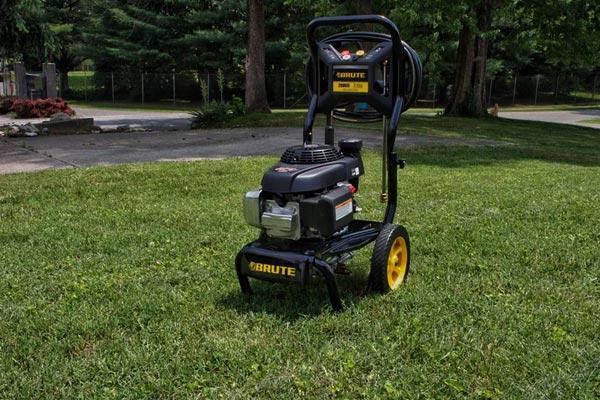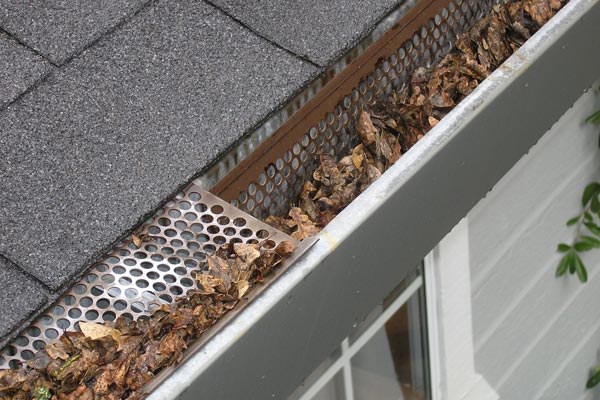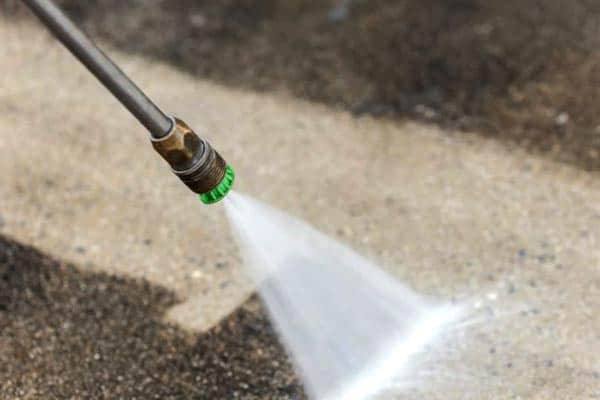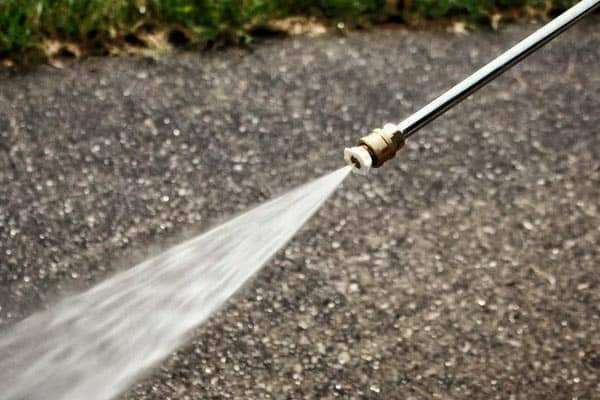Why You Should Avoid Cleaning Your Bicycle with a Pressure Washer
It’s very easy for your bike to get dirty and grungy, especially if you take it out on trails where you’re riding on dirt.
Cleaning it can be a time-consuming process, so it’s natural that you’d start looking for an alternative way to accomplish this task that could speed it up.
You may even wonder if you can use a pressure washer to accomplish this task.
Can I Clean My Bike With a Pressure Washer?
You can clean your bike with a pressure washer, but you should resist the temptation. The jet of water, even on a low setting, can force water into the seals on your bike and make them fail faster. It could also chip the paint or cause surface damage that allows your bike’s frame to start rusting or corroding quicker.
If you’re not sure how to wash your bike or why you can’t just pressure wash it, this is for you. We’re going to outline all of these points and more below for you.
How to Wash Your Bike in Easy Steps
There are a few easy steps you can take to wash your bike by hand without damaging it. However, you should gather your supplies first, and you’ll need:
Chain Cleaner Kit – To clean your chain, you’ll need a host of degreaser and elbow grease, and having a dedicated chain cleaning kit makes the whole process much easier.
Cleaning Fluid – A bicycle-specific cleaning fluid is safe to use on every part of your bike, and it will remove any gunk that you end up collecting. Many of them are biodegradable, so they’re eco-friendly.
Bike Brushes – Reaching all of the parts of your bike can be time-consuming and difficult, especially if you have bigger hands. Having a set of bike brushes ensures you can reach everywhere with ease.
Lubricant – A wet lubricant will cling to your bike chain, even in wet conditions to improve how it slides through the gear system. However, wet lubricants also collect dust quicker in dry conditions.
Cleaning Cloths – if you don’t dry your bike off after you clean it, you run the risk of leaving streaks or watermarks all over it. Having a cleaning cloth on hand will prevent this.
Bucket – A bucket gives you a space to put your warm water.
Once you’ve gathered all of your supplies and have your bike in a clean location, you’re ready to start the cleaning process.
1. Rinse the Frame
Get your bucket of water and a cloth or sponge and give the whole frame a quick wipe down. Once you get most of the debris off, spray your bike with the dedicated bicycle cleaner and allow it to sit for 5 to 10 minutes before scrubbing it with a soft-bristled brush.
You shouldn’t ever substitute the dedicated bike cleaning product and soft-bristled brush with liquid dish soap because it can fade the color or cause tiny scratches.
2. Clean the Brake Pads and Rims
Take a close look at your rims and brake pads. Get a brush and gently work out any grime or debris you see before wiping them off with a cloth.
3. Apply Degreaser to the Chainset and Derailleurs
Spray your bicycle’s derailleurs and chainset with a degreaser. Allow it to sit for several minutes before gently scrubbing it with a brush. You may want to consider removing the chain for this part to make the process easier.
4. Apply Degreaser to the Chain and Cassette
Spray another coat of degreaser on the chain and cassette before getting a gear brush to scrub at them to remove any grime and work the degreaser in.
If the chain still looks grimy, you may want to use a chain cleaner. All you have to do is fill it with a degreaser, snap it on, and rotate your bicycle’s pedal backward to feed the chain through it.
5. Rinse the Frame and Lube the Chain
Rinse any soapy residue off of your bicycle’s frame and dry the chain with an old rag. Apply lubricant to the chain, derailleurs, and pivot points. Your bike should now be clean and ready to go on your next adventure.
Why Pressure Washing Your Bicycle is a Bad Idea
Why can’t you use a pressure washer on a bicycle? Well, you could. However, this is generally considered to be a bad idea because there is a very real chance that you’ll damage components of your bicycle and have to replace them, even if you have them on a lower setting.
Damaged Seals
The jet of water that a pressure washer can produce is strong enough to force water into the seals on your bicycle, and this can weaken them and cause them to fall apart quicker.
You may not even notice the damage right away, but you may find yourself going through seals very quickly.
Strips the Grease from the Bearings
Lubricant is the only thing blocking dirt or other debris from getting into your bicycle’s bearings and causing them to freeze up.
Hitting these bearings with pressurized water from a pressure washer can force all of this lubricant to strip away, and this can result in damage to your bearings much quicker than they would usually fail.
Forces Detergent into the Sealed Bearings
The bearings on your bicycle are usually sealed, but a pressure washer can force detergent into these parts and severely impact how well your lubricant works.
Also, it’s impossible to remove the soapy residue once it gets into the bearings, so you’ll have to replace them to avoid further damage to the bicycle as a whole.
Paint Chips and Cracks
If you were to hit your bike with a higher PSI setting with the water, it can easily chip, crack, or outright strip the paint off the bike.
Once it does, it’s very easy for rust and corrosion to take over, especially if you live in an area with a lot of humidity or dampness. It can also be expensive to repaint or seal the frame to help protect it.
Which Areas Should You Avoid Having a Lot of Water Pressure on?
If you do decide to use a pressure washer to clean your bicycle, you want to stick to the frame, tires, shoes, and saddle on low to medium pressure.
You want to avoid the bottom bracket, hubs, suspension seals, headset, pivots, links, and any bearings at all costs because these items are the ones that are the most likely to sustain damage from the jet of water.
Also, use a non-detergent soap to clean your bicycle over a traditional one because this can be too harsh on all of your bicycle’s components.
Bottom Line
While you can pressure wash your bicycle, most people advise against it because there is a very real threat of doing a lot of damage to some of the bicycle’s components.
We’ve outlined how you can safely and effectively clean your bike without a pressure washer, and all you’ll need is a little time and patience to accomplish this task.






